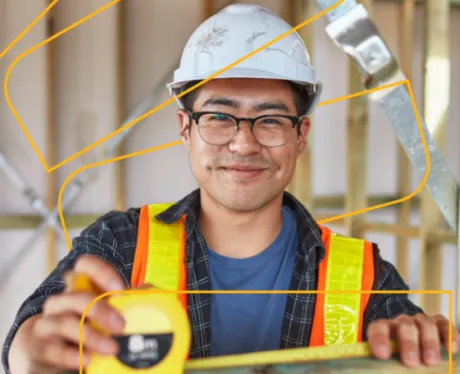From massive engines to intricate gearboxes, mechanical fitters handle it al
Mechanical fitters have a curiosity about how things work, which helps them to diagnose and fix mechanical problems.
What does a mechanical fitter do?
Mechanical fitters assemble and repair machines in the aviation, production, automotive, mining and manufacturing industries.
You’ll find mechanical fitters marking, pressing, cutting, grinding, plane boring, and drilling with their tools of trade: lathes, milling and drilling machines, thermal heating, cutting, and welding equipment.
Mechanical fitters also use tech for the engineering field and can understand engineering blueprints.
Their curiosity about how things work helps them to diagnose and fix mechanical problems.
A typical day as a mechanical fitter could involve:
- Fixing and installing parts such as pumps, gearboxes, motors, valves, or pipes
- Setting up, testing and adjusting industrial machines
- Welding, grinding, drilling and machining metal parts
- Fitting and assembling metal components, tools, and sub-assemblies
- Checking the accuracy and quality of finished parts and repairs
A career in mechanical fitting would suit someone who is:
- Handy
- Physically strong
- Practical
- Meticulous
- Curious about how things work
- Good at maths
Get answers fast about mechanical fitter apprenticeships
An apprenticeship in mechanical fitting teaches you what is involved in the fabrication, installation and maintenance of industrial machines.
You'll gain practical experience and a Certificate III in Engineering – Mechanical Trade over three to four years as an apprentice.
- Under the supervision of qualified fitters, you will learn how to:
- Interpret technical drawings to figure out the right materials and the sequence of operations
- Perform engineering measurements
- Use tools like lathes, mills, grinders, welding tools and general machines
- Use computing technology
- Diagnose and fix machinery issues
- Follow specs to grind, mill, weld, cut and shape products like plastics and metals
- Put together fabricated parts into finished products
- Work safely and effectively
It's easy to apply for a mechanical fitter apprenticeship through MEGT’s Job Board.
- Check out the MEGT Job Board in the top right-hand corner of our website.
- Search for ‘mechanical fitter apprenticeship’ on the Job Board.
- Apply online – send your resume and cover letter directly to employers.
- Polish up the interview skills and land a job as an apprentice!
After completing your apprenticeship and gaining some experience, you can pursue further training to become an engineering tradesperson, such as a mechanical, hydraulic, CNC, maintenance fitter, or manual machinist.
Certificate II refers to a nationally recognised qualification that prepares you for the workplace or academic studies. While it’s not required, it may help you to prepare for a Certificate III.










